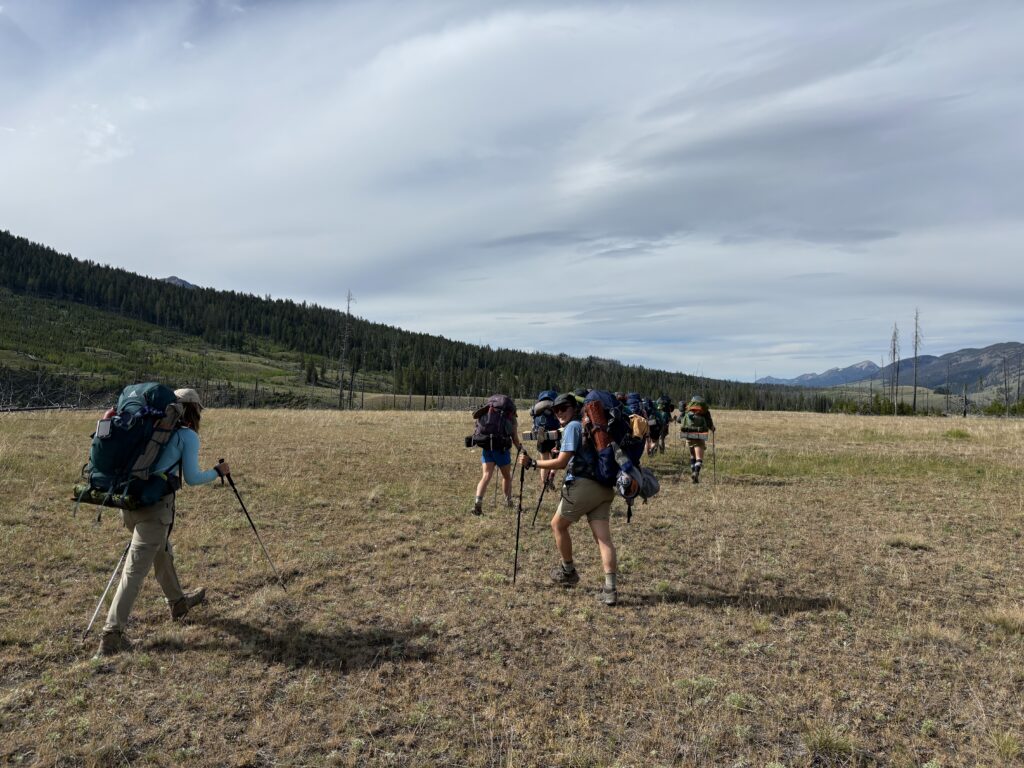Photography can provide a whole new lens with which to view the world. Looking at the Earth through a camera can help people notice the minute complexities in the lighting and scene that they might not notice otherwise. Over the first few weeks of this course, I’ve gotten to use a couple different cameras: my personal DSLR camera and WRFI’s GoPro. Each of these cameras provides a completely different experience from the other and helps me reflect on the academic concepts of the course.

When using my personal camera, I almost always take photos of nature. Flipping between lenses and adjusting the camera settings to capture water flowing over rocks in a waterfall or the perfect pink light on mountain peaks is incredibly meditative and puts me in my comfort zone. Photographing nature centers me in the space around me. On this course, we have spent a lot of time discussing what wilderness is, why it exists, and what it should be. We’ve delved into ideas of biodiversity preservation, recreation opportunities, Indigenous displacement, and more. Spending time photographing the wilderness with my camera helps me reflect on these ideas.
Taking photos with the GoPro is a whole different experience. WRFI gave our group a GoPro at the start of the trip to document our experience. When using the GoPro, I almost never take photos of nature. Instead, I take photos of my peers. Before now, I rarely took photos of people, but the fisheye lens on the GoPro amplifies the silliness and joyousness of my classmates. With this camera, I’m focused on capturing fun moments with friends instead of the place we’re in. These photos end up being a much more personal record of my time here than my nature photos, and I have more fun reviewing them.
My focus on nature when taking photos with my camera and my focus on people when taking photos with the GoPro reflects conflicting ideas about the purpose of wilderness. Right before starting a nine day backpacking trip in the Bob Marshall Wilderness, we read an essay from Bob Marshall himself, a naturalist prominent in the first half of the 20th century. He argued that wilderness should be set aside so it can be used to fulfill people’s desire for adventure (Marshall 1930). Alternatively, Christopher Ketcham, a current nature writer we’ve read, argues that “the human benefits provided by wilderness were meant to be secondary to the needs of the ecosystems themselves” (Ketcham 2014).
To me, the GoPro symbolizes the recreation and human side of this dilemma, while my DSLR camera photos represent the natural side. Both sides of this dilemma are incredibly important, and a proper balance must be found between them. On one hand, climate change is rapidly worsening the already diminished state of our natural ecosystems, and it’s incredibly important that we do everything we can to save them. On the other hand, if we don’t encourage people to spend time in nature and provide the access to do so, few will have a deep enough personal connection to be motivated to tackle the issues of climate change and biodiversity decline.

I have also noticed that the nature photos I take with my personal camera are always devoid of people. While I don’t think a photo of a mountain that doesn’t have any people in frame is not inherently bad, it can perpetuate harmful ideas. The wilderness concept was created as a way to displace Indigenous communities and erase their cultures. By taking nature photos that lack people, I’m upholding the artificial and colonial idea that nature is separate from humans that Mark Spence critiques in his essay, “Crown of the Continent, Backbone of the World” (Spence 1996). I’m not sure how this realization will impact my nature photos going forward, but I value the reflection I’ve had on this topic.
My experiences with varied forms of photography on this course have helped me come to terms with the ideas we discuss. I’m incredibly grateful for the time I’ve spent with WRFI in the Conservation Across Boundaries program and I’m incredibly excited for what’s to come.